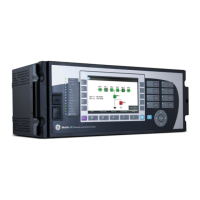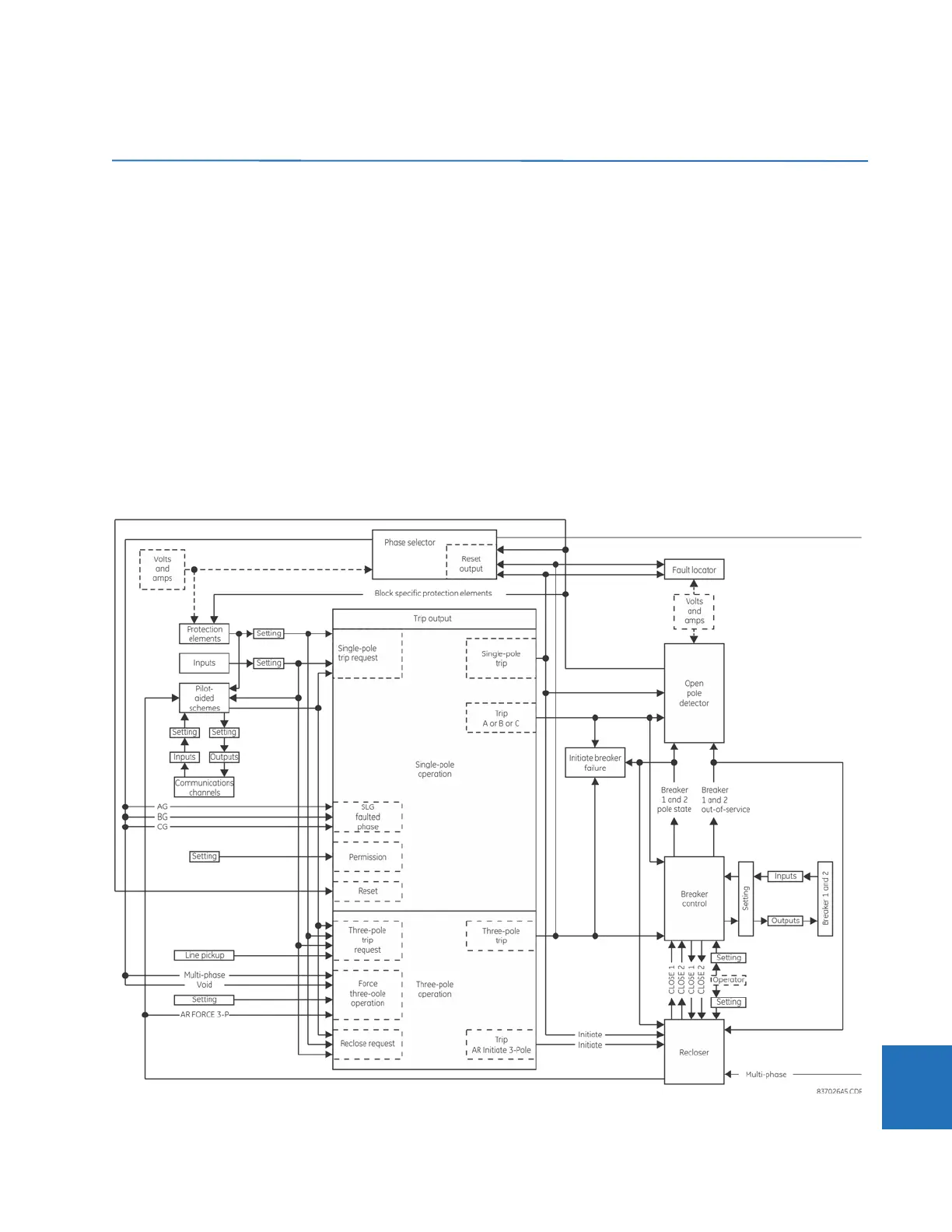CHAPTER 10: THEORY OF OPERATION SINGLE-POLE TRIPPING
L90 LINE CURRENT DIFFERENTIAL SYSTEM – INSTRUCTION MANUAL 10-37
10
See the Application of Settings chapter for information on setting calculations.
10.5 Single-pole tripping
10.5.1 Overview
10.5.1.1 Introduction
Single pole operations make use of many features of the relay. At minimum, the trip output, recloser, breaker control, open
pole detector, and phase selector must be fully programmed and in service; and either protection elements or digital
inputs representing fault detection must be available for successful operation. When single pole trip-and-reclose is
required overall control within the relay is performed by the trip output element. This element includes interfaces with
pilot-aided schemes, the line pickup, breaker control, and breaker failure elements.
Single pole operations are based on use of the phase selector to identify the type of the fault, to eliminate incorrect fault
identification that can be made by distance elements in some circumstances and to provide trip initiation from elements
that are not capable of any fault type identification, such as high-set negative-sequence directional overcurrent element.
The scheme is also designed to make use of the advantages provided by communications channels with multiple-bit
capacities for fault identification.
Figure 10-14: Single-pole operation

